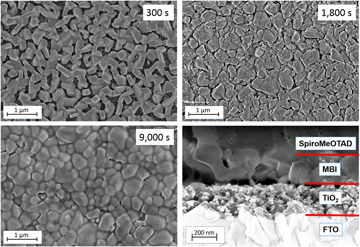Article contents
Reaction engineering of CVD methylammonium bismuth iodide layers for photovoltaic applications
Published online by Cambridge University Press: 06 February 2019
Abstract

In the past years, numerous alternative cations to replace Pb2+ in perovskite solar cells have been investigated. In terms of toxicity and chemical stability, methylammonium bismuth iodide [(CH3NH3)3Bi2I9 or MBI] containing the Bi3+ cation has been considered as a promising material. However, fabrication of coherent MBI films remains challenging. Recently, significant progress has been achieved by using vapor deposition processes. Compared with solution-processed ones, vapor-deposited MBI solar cells show higher fill factors and efficiencies. In this work, chemical vapor deposition (CVD) of MBI is investigated. Employing nitrogen as carrier gas, the precursors bismuth iodide (BiI3) and methylammonium iodide (MAI) are deposited sequentially over several cycles and form MBI during the process. In order to form dense and coherent layers, the lengths of the deposition cycles as well as the substrate temperature have been optimized. Scanning electron microscopy reveals the strong influence of both parameters on growth and crystal properties. Optimized films of MBI integrated into solar cells show that CVD of MBI is a promising method for fabricating large-area solar cells.
- Type
- Invited Paper
- Information
- Copyright
- Copyright © Materials Research Society 2019
References
- 9
- Cited by




